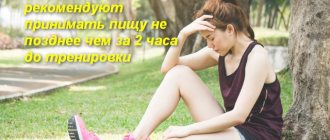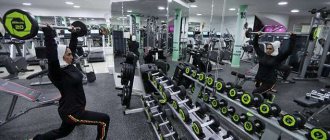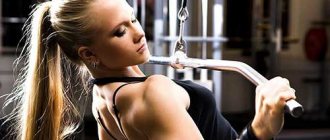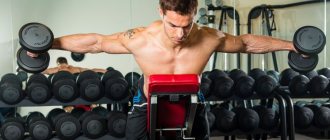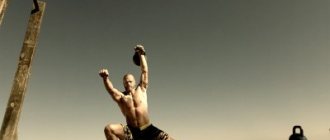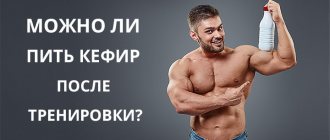Home / Pain
Back
Published: March 19, 2019
Reading time: 3 min
0
2396
Lower back pain after physical activity is an integral part of the life of almost every athlete. But it occurs not only after exercise, but also as a result of illness. To understand whether to see a doctor or not, you should learn to recognize the nature of pain.
If discomfort appears suddenly, that is, the person was not injured and did not work out in the gym the day before, it is better to make an appointment with a doctor and undergo an examination to eliminate the possibility of complex diseases. Some people begin to heal on their own. This is a serious mistake that can lead to complications.
- 1 When is pain correct and when is it a sign of injury?
- 2 Reasons and exercises that can harm
- 3 Diseases for which it is prohibited to exercise in the gym
- 4 Therapy and strengthening of back muscles
- 5 When to go to the doctor
Causes of pain
The causes of discomfort vary depending on your general health and level of physical fitness.
Pain in the muscles of the spine
Sedentary work and a sedentary general lifestyle cause degradation of the back muscles.
Pain in the muscles of the spine
In a normal physiological state, these are very strong muscles, capable of supporting not only body weight for a long time, but also additional dynamic and static forces that arise during labor or exercise. If muscles are not used taking into account their purpose, then the body considers them unnecessary, and the tissues gradually degrade. As a result, not only lower back pain, but also poor posture and other changes in the body.

Changes may also affect posture
What is lactic acid
With a sharp increase in loads, the muscles cannot cope with this mode of functioning, the tissues cannot withstand it, micro-tears and other mechanical damage appear. Lactic acid is a breakdown product in the muscles; it is always present in the tissues and is constantly excreted in the bloodstream.
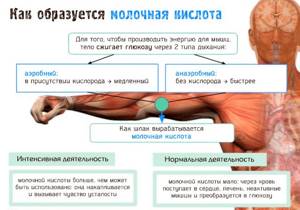
Lactic acid formation in muscles
But this only happens in two cases:
- muscles in their usual state. There are no overloads that cause microtrauma to tissues, causing a sharp increase in lactic acid and deterioration of blood flow. During ruptures, the ability of blood flow in the capillaries is disrupted, the intensity of lactic acid removal is further reduced, and its total amount increases;
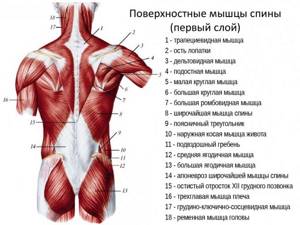
Back muscles - trained muscles are subjected to excessive critical loads. Such lower back pain is felt by athletes who violate the recommended loads during training. The second reason is an incorrectly developed training plan.
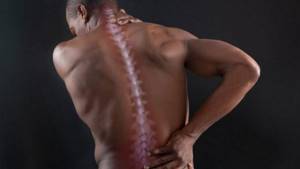
Improperly organized training process can often result in injury.
Most of the acid is eliminated from the body within a short time after cessation of exercise, but this only happens in cases where the effort corresponds to the capabilities and training of the muscles. Lower back pain caused by lactic acid appears only during exercise; no discomfort is observed at rest.

Low back pain caused by lactic acid occurs only during exercise
Systematic and correctly scheduled training of the back muscles allows the body to quickly cope with the disposal of excess acid concentration, pain is significantly reduced and after 2-3 days disappears completely.
Why are the lumbar muscles injured?
From a physiological point of view, there are three main predisposing factors to injury: 1) heavy load, 2) weak muscle in 3) a state of stretch. If the range of motion is within physiological limits and the brain does not send signals to lift too much weight, then injury will not occur. However, if you try to lift more than the loaded muscle can, you run the risk of tearing the fibers and causing severe pain.
Another mechanism for the appearance of pain is that under high loads, part of it is taken over by small intervertebral muscles, which are not adapted for this type of work. This model works most often in the case of incorrect exercise technique, when a smaller and weaker muscle works instead of a large one. And a weaker muscle is much easier to injure.
If you train without warming up, cold muscle fibers respond much less well to the load. Not only their strength decreases, but also their ability to stretch, which significantly increases the likelihood of injury. That's why the best prevention of lumbar pain and injury during exercise is:
- Always warm up the muscles you are going to train - a couple of approaches with light weights.
- Maintain proper technique.
- Do not take a weight that you are not used to.
Types of lower back pain after exercise
Depending on the state of health and level of physical fitness, pain is divided into two large groups.
| Type of back pain | Reasons and brief description |
| The main reason is excessive stress on the muscles. For the most part, they do not cause chronic changes in the spine, but can cause damage to individual vertebrae. As the load decreases, the load disappears, and it takes from several hours to several days to restore the functionality of the back. Examples of physiological pain: a sharp increase in physical activity, incorrect position of the back while lifting weights or performing physical work. When lifting loads from the floor, your back should only be straight and not bent. Weights are lifted with your legs, not your back. Due to this technique, mechanical loads on the intervertebral discs are reduced and the risks of injury are minimized. Such injuries cause very severe pain and can have long-term negative consequences. Women have their own characteristics - physiological back pain occurs due to prolonged wearing of high-heeled shoes and during pregnancy. |
| They can be constant and increase with loads or occur only periodically. There are many reasons and they are associated not only with pathological changes in the spine, but also with problems in nearby internal organs. In addition, sometimes lower back pain after physical activity may not be primary, but radiating; the cause is not located in the spine. In this area they are felt as a secondary sign of disease or dysfunction of the body. Most often, problems arise in the lumbar region; it bears the maximum load and most of the nerve endings of the peripheral system are concentrated here. |
The reaction to the appearance of pain depends on the cause of its occurrence and the nature of its course.
Pinched nerves
If your lower back hurts a lot after physical activity, one of the reasons may be pinched nerves. In this case, a sharp and severe pain occurs in the lumbar region.
This most often occurs when lifting heavy objects with your back in an incorrect position. When the lumbar nerves are pinched, back pain can radiate to the leg.
If the cause of pinched nerves is excessive physical activity, then the first aid should be rest and dry heat. To do this ensure a comfortable body position so that the lumbar spine is completely relaxed.
Place a pillow or bolster under your knees so that you can feel your back muscles relax. It is also necessary to provide dry warmth to your back. To do this, wrap your lower back with a warm scarf or wear a warming belt made of natural wool . In this case, visiting a doctor is not necessary.
If the pinched nerves are caused by hypothermia, first aid is similar. Additionally, you can use warming ointments. However, if the pain does not go away within a few days, you should contact a neurologist for additional examination.
When back pain does not require medical intervention
Not all cases of pain after physical activity indicate complex pathologies or injuries requiring medical intervention. When can you not worry, and unpleasant sensations are considered temporary and arise due to a normal reaction of the body?
- Pain appears after intense exercise: sports activities, physical labor, etc. It must be emphasized - not critical, but intense.
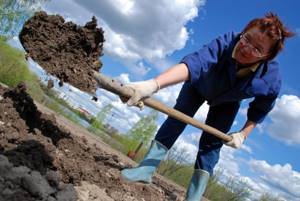
Your back may hurt after intense physical activity - this is completely normal.Critical loads can cause mechanical damage to the intervertebral discs or the discs themselves, pinching of nerve fibers, and rupture of muscle tissue. Often such consequences require contacting medical institutions. The concept of physiological pain refers to the unpleasant sensations that arise due to an increase in the concentration of lactic acid. It is not removed from the body in a timely manner, and pain appears with repeated strain on the back muscles. But on the third or fourth day, the symptoms disappear on their own, and the body completely restores its physiological capabilities.
- If back pain is local, it only bothers you in one place. The reason is that certain back muscles were damaged as a result of the blow. During rest, a person feels normal, but with any movement or stress on the back, pain appears. If the described symptoms disappear after two to three days, then there is no need to worry. If the pain is felt for a longer period, then this indicates serious damage not only to soft tissue, but also to bone tissue and requires medical intervention.
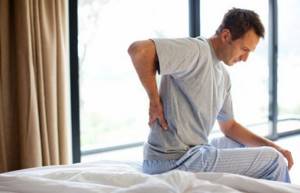
If the pain goes away within a couple of days after the blow, there is nothing to worry about.
When to see a doctor
If after training your back hurts moderately and goes away quickly, you do not need to see a doctor. When the pain is of a specific nature, consultation will be required:
- the symptoms are very strong, stitching and pulling;
- the pain always persists, but it intensifies after exercise and at night;
- there is a feeling of numbness in the arms or legs;
- pain appeared after falling on the stomach or back;
- after physical exertion, vision becomes dark and loss of consciousness occurs.
These symptoms may indicate the development of chronic pathologies or a compression fracture of the spine.
Treatment
To relieve the intensity of pain in the lower back after exercise, you should follow two recommendations: remove the cause and use painkillers. When it doesn’t help, you need to see a doctor.
As local therapy, it is recommended to treat the lumbar area with Dollit, Finalgon, Butadion and other ointments and gels of identical action.
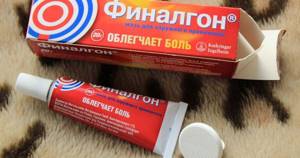
"Finalgon"
The list of means is very wide, but in terms of effectiveness they are no different from each other. The existing difference in cost is explained by the popularity of the brands and the success of the manufacturers' advertising campaigns. Inflammatory processes in nerve fibers are treated with non-steroidal drugs.
There are a lot of ointments for back pain. Everyone has a different composition and active ingredients. Some drugs cool, others instantly warm, and from others you will have to wait a very long time for the analgesic effect. To choose the right ointment, we recommend reading the detailed article on our website.
Diagnostic methods
Without a correct diagnosis and determination of the causes of pain, their successful localization or elimination is impossible.
Radiography
Several types of traditional diagnostics of the condition of the spine are used after the occurrence of certain pathologies. At the initial stage of the examination, radiography is prescribed in standard positions of the spine. The doctor can notice disturbances in the physiology of the vertebrae or parts of the spine, promptly detect degeneration of bone tissue, and see unnatural changes in the discs. In some cases, a diagnosis of metastatic lesions of the vertebrae is made.
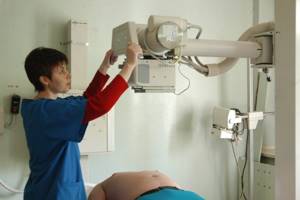
X-ray examination
In more complex cases, functional radiography may be prescribed. This complex examination allows not only to identify obvious signs of pathological processes, but also to notice the early stages of the development of various abnormalities in the spine.
Magnetic resonance imaging
A fairly accurate examination that allows you to monitor the condition of the soft tissues around the spinal column. Makes it possible to identify protrusions and hernias, oncological and benign tumors, inflammation and other pathological changes in the early stages of development.
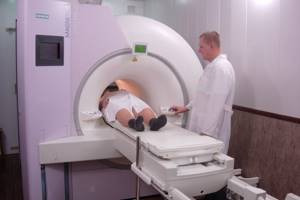
Magnetic resonance imaging
CT scan
The most detailed study of the condition of the bone and soft tissues of the spine. Prescribed in the most difficult cases or when life-threatening diseases are suspected.
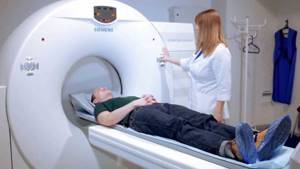
CT scan
Referring pain
Very often, pain in the lumbar region indicates inflammatory diseases of the prostate gland, liver, kidneys, stomach, intestines, excretory and other systems.
To make a more accurate diagnosis, you should contact a general practitioner, who will prescribe a full examination and, based on its results, refer you to a gastroenterologist, nephrologist, urologist or surgeon. If the lower back and right side hurt, this may indicate hepatitis, cholecystitis, right-sided pneumonia and other serious diseases. Also, such sensations in men may indicate inflammation of the prostate gland or prostatitis .
With severe pain intensity, appendicitis, pancreatitis and cholelithiasis can also be assumed. In this case, pain in the lumbar region is only an indirect symptom , and the main ones are increased body temperature, nausea and vomiting, pain when urinating, weakness, fatigue and others.
It is very important to contact a specialist in a timely manner. Indeed, behind the seemingly ordinary lower back pain, very serious diseases that require immediate treatment can be hidden. Therefore, your lower back hurts very badly, call an ambulance immediately.
Is it worth loading the spine if pain occurs?
The question is very individual, the answer depends on the type and intensity of pain. The only correct way of life is mandatory movement, and if possible, playing sports. This does not mean elite sport, when in order to win you have to cause serious harm to your health, including your spine. You need to do physical exercise to improve your health, you don’t need to set any records.
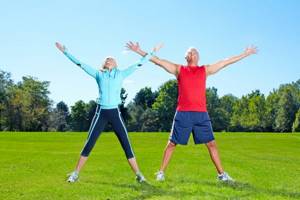
Sports exercises should be enjoyable and fatigue should be moderate.
Complete cessation of movement when pain occurs is recommended only in the acute period; in the future, taking into account the condition, motor movements of varying intensity can be started.

If your back pain is not acute, you shouldn’t stop moving.
Refusal of exercise has one goal - to eliminate the provoking factor of pain. Proper treatment will not only get rid of the pain that has arisen, but also prevent its occurrence in the future as much as possible.
Discomfort in ligaments and muscles
Pain in the ligaments usually manifests itself both at rest and during movement, but when moving, the pain syndrome only increases.
As a rule, the lower back hurts after back training due to sprained ligaments or muscles. This condition can be prevented by developing muscles and strengthening the spine. Even people who have previously been injured while playing sports can significantly improve their condition and strengthen their muscles.

Professional athletes know that the simultaneous work of antagonist muscles is very important when training. This is especially true for those who have serious back problems. To prevent post-workout pain, it is important to try to evenly distribute the load on the spine while playing sports. This means that doing 300 squats in order to strengthen the abdominal muscles is incorrect and even dangerous to health. The trainee must evenly distribute the entire load on the spine, this also applies to antagonist muscles.
Some types of exercises are prohibited for persons with osteochondrosis. Weightlifting, which puts a lot of stress on the spine, can only aggravate the pain syndrome. It is important to exclude or carefully monitor the following types of exercises: leg press from a seated position, deadlift, lunges with a load on the shoulders, military press.
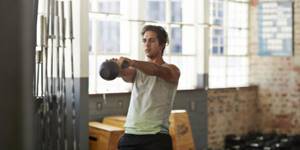
Professional athletes have a well-trained body, so the likelihood of injury or some kind of complication in their case is minimal. Beginners in the sport should pay special attention to the technique of lifting weights, since performing the exercises incorrectly can cause serious health problems. If your lower back hurts after working out your abs, then it is important to reduce the weight you lift or the number of repetitions.
Other diseases - clinics in
Choose among the best clinics based on reviews and the best price and make an appointment
Family
Scoliosis Treatment Center named after K. Schroth
Moscow, st.
Azovskaya, 24, building 2 POM VI/KOM 5,6,7/ET 1 Sevastopolskaya
+7
- Consultation from 1500
- Exercise therapy from 2700
0 Write your review
Family
Oriental Medicine Clinic "Sagan Dali"
Moscow, prosp.
Mira, 79, building 1 Rizhskaya
+7
- Consultation from 1500
- Diagnostics from 0
- Reflexology from 1000
0 Write your review
Family
Center for Chinese Medicine "TAO"
Moscow, st.
Ostozhenka, 8 building 3, 1st floor Kropotkinskaya
+7
- Consultation from 1000
- Massage from 1500
- Reflexology from 1000
0 Write your review
Show all Moscow clinics
Compliance with training rules
When conducting training, a person must follow the following rules:
- handle cargo and heavy objects carefully;
- regularly consult with a trainer (at least in the first 6 months of training in the gym);
- wear comfortable, loose clothing and shoes during training, which will help prevent the development of injuries;
- drawing up a proper diet with plenty of calcium in foods (it will help improve bones) and protein (it effectively affects weight and strengthens the muscle corset).
If back pain appears unexpectedly after working out in the gym, you should not panic too much. It is important to listen to the state of your body, reduce the physical stress on the body, which it cannot fully cope with at this stage.
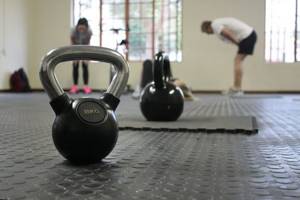
If your lower back hurts after strength training, it is important to see a doctor immediately. It is dangerous to carry out self-treatment, since such a lesion in the back can be eliminated with the help of compresses and local medications, which would be very dangerous for other types of injuries.
Other diseases - specialists in Moscow
Choose among the best specialists based on reviews and the best price and make an appointment
VertebrologistOrthopedist
Gromov Ilya Sergeevich
Moscow, st.
Azovskaya, 24, building 2 POM VI/KOM 5,6,7/ET 1 (Scoliosis Treatment Center named after K. Schroth) +7 Registration
0 Write your review
VertebrologistOrthopedist
Kudryakov Stepan Anatolievich
Moscow, st. Azovskaya, 24, building 2 POM VI/KOM 5,6,7/ET 1 (Scoliosis Treatment Center named after K. Schroth)
+7
Registry
0 Write your review
Orthopedist
What to do during an exacerbation
There are a number of measures that can be taken to reduce the severity of pain in the lumbar region.
Some of them can be done at home, but they are not effective enough to completely relieve the patient of pain. In case of severe pain, treatment is carried out with medications and physical therapy. Correct application of these methods will allow for fairly rapid recovery of the damaged part of the spine.
Let's take a closer look at the most commonly used methods to reduce lower back pain.
Hanging on the horizontal bar
This method is indicated for diseases of the spine such as disc protrusion, osteochondrosis, and intervertebral hernias. Hanging on the horizontal bar for several minutes 4-5 times a day allows you to reduce the load on the damaged part of the spinal column and increase the space between the vertebrae.
Thanks to this, the degree of compression of nerves and blood vessels is reduced, and nutrition of soft tissues is restored. However, the effect of hanging is reversible; other treatment methods should be used to consolidate the result.
Massage
Massage is effective both for muscle fatigue and during the recovery period after a back injury.
Rubbing movements help improve blood supply to the affected area, which accelerates the process of tissue restoration.
For injuries and diseases of the spine, massage should not be performed without other therapeutic measures.
Doctors recommend first taking a course of anti-inflammatory therapy. It is also useful to engage in physical therapy along with massage, exercises aimed at strengthening the muscle corset.
Electrophoresis
This area of treatment relates to physiotherapy. The method involves exposing the affected tissue to a weak electric current, which improves the absorption of drugs. For lower back pain, electrophoresis with anti-inflammatory drugs is most often used.
In addition to improving the penetration of drugs into tissues, this method has a stimulating effect. Electric current improves metabolic processes in tissues and accelerates their recovery.
Important! Because of this feature, electrophoresis is contraindicated in the acute stage of inflammatory pathologies - in these cases, physiotherapeutic procedures can provoke a deterioration in the patient’s condition. Therefore, this method of treatment is prescribed to patients 3-7 days after the start of therapy.
Physiotherapy
Therapeutic exercise for diseases of the spine is carried out after basic therapeutic measures and pain relief. Gymnastics includes exercises aimed at strengthening the lower back muscles.
Performing them regularly makes it possible to strengthen the muscle corset, which supports the spinal column and protects it from damage. This is why you can significantly reduce the likelihood of exacerbations of the disease.
Injections of painkillers, blockade
In cases of severe pain, doctors recommend treatment with medications - painkillers and anti-inflammatory drugs. If the cause of pain is associated with damage to the nerve trunk, a blockade is performed.
This treatment involves injecting a local anesthetic (such as lidocaine) into the area where the nerve is located. After this, its conductivity decreases and pain disappears.
In addition, intramuscular administration of anti-inflammatory drugs, for example, Diclofenac, Indomethacin, etc., is indicated.
These medications help reduce the production of substances responsible for the development of inflammatory processes in the patient's body. Thanks to this, it is possible to reduce tissue swelling and reduce the degree of compression of nerves and blood vessels.
My lower back hurts after running, what are the causes and what to do?
What is the prostate gland? What are the features of the anatomical structure and functions of the organ? The prostate is a purely male organ. It has the shape of an inverted trapezoid. As mentioned above, it covers the urethra and seminal ducts.
Male reproductive system
The prostate gland consists of two lobes, which are connected by an isthmus. The age factor provokes thickening of the isthmus, which contributes to compression of the canal. This leads to stagnation of urine and provokes inflammation of the bladder and kidneys.
The glandular organ performs the following functions:
- Secretory. Ensures the production of testosterone, stimulates secretions that are involved in the process of fertilization of the egg.
- Motor. The smooth muscle fibers of the organ are a sphincter that holds urine in the bladder.
- Barrier. Prevents the spread of infection from the urethra up the urinary tract.
The prostate produces hormones, ensures normal urination, and holds urine in the bladder when necessary. The adequacy of the prostate is an important aspect of men's health.
Healthy prostate and prostatitis
Malignant tumor formations
Malignant prostate pathology is the most common disease affecting men over fifty to sixty years of age. The causes of prostate cancer are heredity, progressive adenoma (benign tumor).
Symptoms and main manifestations of cancer can be divided into three groups:
- Impaired outflow of urine. Urination is frequent, in small portions. Nocturnal urination predominates. The urge to urinate is pronounced.
- Symptoms as a result of tumor growth. The appearance of blood in seminal fluid and urine. Erectile dysfunction. Palpable pain localized in the groin, perineum, and lower back.
- Symptoms as a result of metastases. Pain in the bones, swelling of the limbs, enlarged lymph nodes, sudden weight loss. Anemia develops as a result of a decrease in the level of hemoglobin and red blood cells. Cancerous exhaustion, so-called cachexia, is also observed.
Malignant tumor
Diagnosis of cancer tumors and their treatment are mandatory steps on the path to recovery. Research methods such as prostate biopsy, magnetic resonance imaging, ultrasound scanning help establish an accurate diagnosis, characteristics, and location of the cancer tumor.
Prostate cancer is treated with surgery and minimally invasive interventions. Surgical means radical removal of the prostate while preserving erectile and urinary functions.
An example of a minimally invasive intervention is targeted exposure to high-intensity ultrasound waves. Extreme temperature increases lead to the destruction of cancer cells.
Radiation therapy is also carried out, targeting the tumor and lymph nodes.
Why does my back hurt when running?
Painful sensations when running can be caused by various factors and mistakes that were not taken into account or made by the athletes themselves:
- Incorrect body posture while running;
- Excessive stress in the spine or limbs;
- Weak muscles, especially in beginner or infrequently trained athletes.
Excessive bending at the waist or excessive forward bending
This mistake is often made by beginners who neglect to consult with experienced runners. With this technique, incorrect posture and excessive load on the vertebral part of the back were noted while running.
Subsequently, aching, nagging pain occurs when the back muscles are tense or when bending forward or backward.
You can avoid discomfort during training if:
- Keep your back straight at all times;
- When running, bend forward not only the upper body, but the whole body.
Straight leg swing forward and landing on the heel
A completely unsuccessful maneuver. Having used it, the pain syndrome will very soon make itself felt. By throwing your straight leg forward, you automatically land on your heel.
The impact of the limb colliding with the surface will cause vibration that will travel from the foot to the upper body. Not only the spinal components are injured, but also the largest joints of the legs: ankle, hip, knee.
After a shock, shooting pains will appear in the lower back. Sudden movements will be impossible. Frequent movement in this way increases the risk of vertebral fractures.
Sports to strengthen your back muscles
A set of exercises to strengthen the muscles of the lumbar region is recommended to be done on a regular basis, and a constant focus on sports should become a vital necessity. Depending on the time of year, outdoor training in the pool and open water is encouraged. The main condition is the absence of concussions and sudden twisting of the spine.
- Skiing (skiing) helps to evenly distribute the load on the back muscles, strengthens them perfectly and improves metabolic processes.
- Horseback riding (an alternative is a bicycle or exercise machine) allows you to feel the optimal position of the spinal column and develop correct posture.
- Swimming is the best way to unload the spine and relax the muscles. Exercises on the back are especially effective.
The best result is achieved if a set of warm-up exercises is performed before physical activity. At the same time, blood supply improves, muscles warm up and become elastic.


